You know that writing is an important part of literacy instruction. You want your students to become stronger writers – and actually WANT them to write, too!
But there’s so much that goes into writing! Brainstorming, planning, drafting, revising, publishing. And then there are the different types of writing – personal narratives, informational, opinion pieces, letters, biographies, responding to prompts…!
And then on top of all of that, you’re trying to have students use proper grammar?!
These are all great goals to have. But where do you actually start with all of this for your Kindergarten, 1st grade, and 2nd grade students?
In this post, I have a video (and transcript, if you prefer to read) that will help you feel equipped to start teaching writing in K-2, no matter where your kids are with their skills!
Also, if you would like to participate in a FREE webinar called “5 Secrets to Getting K-2 Students to Write Independently,” click here for access to that!
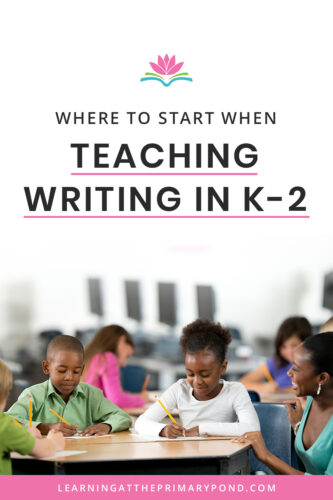
Watch the video to find out what tips I have to offer!
Transcript below:
“Hey, I’m Alison from Learning At The Primary Pond. I’m a literacy specialist, and in this video I’m going to share some really helpful tips with you on how to get started at the very beginning of the school year when it comes to teaching writing to K-2 students. Before we dive in, if you haven’t subscribed to my channel (https://www.youtube.com/@learningattheprimarypond) yet, make sure to do that now, and then also hit the little bell so that you’re notified every time I post a brand new video about teaching literacy in K-2.
The beginning of the year in general can be a little bit overwhelming, but I feel like, especially in the primary grades, teaching writing can be overwhelming in the sense that you might know where you want students to get eventually. You might have goals for them, but at the beginning of the year, we are just so far away from those goals and it really can feel overwhelming.
I found that sometimes writing programs or curriculums assume that the kids are starting off much higher than they really are, and they maybe don’t give enough guidance on the basics. So let me know right now in the comments, just type yes or no, do you feel like the current writing program or curriculum that you use does give you enough guidance in getting your students off to a good start? Very much starting with the basics? Just let me know, yes or no. Very curious because I know writing programs really vary in that.
Let’s dive into actually what do we do when we’re getting started. How do we start to get on that path to getting our students where we want them to be? First of all, I think it’s helpful to think about all the different components of writing instruction. There’s the writing genres, so narrative, opinion, and informational. Obviously, you’re not going to do all of them at once but you kind of have to keep that in mind throughout the school year. There’s responding to prompts, as in a specific prompt or maybe even writing about text. That could also be if the kids read a story or listen to a story, reading response type things. There’s grammar which is an important part of writing. Then you also want to think about if you are going to have a whole group mini lesson? Are you going to do any small group writing, or is that going to happen in small group reading?
Next, once you’ve kind of mapped all that out and maybe just do a brain dump, take a look at your schedule and see how much time you actually have allotted in the day for all of that. You may be able to squeeze in more than you originally thought because you have a set writing block, well, that’s great. But even if it’s short, maybe during your reading block, the kids are writing about reading or maybe during small group they’re doing a little bit of writing as well. So just think about how you can kind of integrate writing throughout your entire block. I’ll actually show you in a minute what your writing block might look like with a first grade example.
Next up, I want to talk about pacing. This is the first grade pacing guide from our writing program, Primary Writing Success.
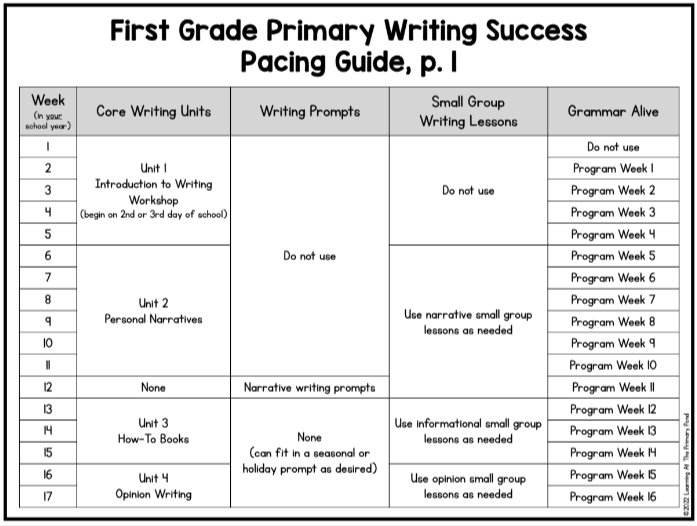
This is just an example (see above), but if you have a pacing guide or if you make a pacing guide, you can kind of map out how all those components that we talked about, like the prompt writing, the different genres. Take a look at the whole year. You don’t have to have all of your details spelled out at the very beginning of the school year by any means, but it does kind of help if you have a general plan. That’s the purpose of this pacing guide in Primary Writing Success program. I’ll leave information about Primary Writing Success along with this video.
In the guide, you can kind of see, we start with a core writing unit pretty much right away in the school year because we start off so small as far as what we expect the kids to do. I’ll talk about that in a minute too. But then we’re not worrying about writing prompts at first, we’re not worrying about any small group writing, and then the grammar piece doesn’t start until the second week of your school year. You don’t have to start everything at once. That’s the reason why I want to show you this pacing guide, right? We don’t have to dive in and overwhelm ourselves, one step at a time. But again, it does help to have kind of that plan for the entire school year so that you know, okay, well maybe we’re starting with narrative writing, but then we’re going to get to opinion and informational writing as well.
This is unit one of the core writing units in Primary Writing Success. But the reason why I wanted to talk about this list of lessons is because I feel that it’s really important not to dive in too hard, too fast, even though I recommend starting writing pretty close to the first day of school, maybe your second or third day. With Kindergarten, you might want to wait a couple more days. But in unit one, the first lesson is just having the kids brainstorm and you’re making an anchor chart of why do people write? What is the purpose of writing? Why are we even learning how to write? So just talking about that, having that discussion. In lesson two, we work on using writing tools. So literally just how do we use pencils appropriately? Maybe how do they access paper? Are they supposed to use both sides of the paper? Whatever your expectations are.
Lesson three, we talk about the parts of the writing workshop. This is what they can expect every day. These are the procedures and what they’re supposed to be doing. Then a lot of the other lessons in the first unit, which we would do one lesson per day, are very simple. It’s just stretching out words to spell them. Using invented spelling, using an alphabet chart for help. Those are two separate lessons. The parts of a sentence, remembering your sentence and writing your sentence. It’s definitely not expected that by the end of the unit, the kids are writing perfect sentences, but you’re kind of laying the foundation. Then in future units you will just build on that and help their sentences become better.
I also want to mention in unit one, and I feel like this is most relevant for first grade, not so much kindergarten, I do take a little writing sample from them. In unit one of first grade, you take a personal narrative writing sample from them, which might just be drawing at this point. It may be a few words and that’s totally okay. You also take an informational writing sample at some point, and then later an opinion writing sample. These are not formal tests or anything. It’s just kind of seeing what the kids can do. But the purpose of this is that you have a baseline for what the kids can do at the beginning of the year, and then you can see growth.
After you teach that personal narratives unit, you can look at their writing and say, “Well, wow, this was where we started at the beginning of the year, and this is where this child is now.” So those writing samples are another important piece. The main reason I wanted to show you this, again, is just to emphasize that we start off so slowly just with the basics, really working on those routines and procedures, before we dive in and start doing a ton of heavy content. Especially if you’re new to teaching or your grade level, be patient with yourself and your students and don’t push too hard, too fast, because it’ll be too much for you and your students. When we lay the foundation and the kids know what to expect and they feel comfortable, it just paves the way for everything to be so much smoother throughout the school year.
Last thing I want to show you, is just a little sample schedule. At the very beginning of the school year, my writing block is not as long as it eventually will be, because the kids just don’t have the stamina. It helps to have an eventual plan for your writing block as well. Let me kind of just walk you through this first grade example. Obviously it would be a little bit different depending on what grade you’re teaching.
So first every day we have a mini lesson, 10 to 15 minutes. Next up, the students are working. That could be 10 minutes, probably at the beginning of the year more like five to seven minutes, all the way up to 30 minutes maybe by the end of the year, if you have it. You don’t have to have that much time in order to practice writing. Some practice is better than nothing, right? Then at the very end of writing time, I like to have a little sharing time and wrap up for about five minutes. I actually have all the students share every day even if they’re not all sharing with the whole class. I have my students bring what they’ve been working on to the rug, doesn’t have to be finished, in their writing folder. Then they partner up and they get to read or talk about the picture if it’s kindergarten / early first grade, what they drew or wrote to their partner. Then I might have one or two kids share out with the whole class. I like this because it just gives all the kids an opportunity to share, which is really motivating. It can be a good reminder when they’re working too. “Hey, we probably should get going because you want to have something to share today during writing time. Right?” So it’s a good motivator and it’s just something that they enjoy. It creates a real purpose for their writing.
I hope all of that was helpful in just thinking about how to get started. Have a long term plan, even if it’s not super detailed, and then also having a long term plan for what you want the writing block to look like. We talked too about getting a sample from students so that you can monitor growth throughout the rest of the school year. If you would like to learn more about teaching writing, I have a full length, one hour training with the focus of helping your kids become really independent with their writing, which is great for the beginning of the school year, but honestly anytime. K-2 kiddos sometimes struggle with that a little bit, but you need to be freed up to be able to go and help the kids that you need help and not constantly have to be next to so many kids just to get them working. We want to build that independence.So that full length training is all about that. It is totally free. You get a certificate and all that good stuff. Look for the link (https://www.primarywritingsuccess.com/5-secrets-to-getting-k-2-students-to-write-independently-eg) with this video. Of course let me know if you have any questions. Thanks so much for watching. I hope this was helpful. Don’t forget to hit the like button, subscribe (https://www.youtube.com/@learningattheprimarypond), and I will see you in the next video.”
Conclusion
I hope you learned a lot about where to start when teaching writing in K-2! The link for my webinar that will give you tips on how to help your K-2 students write independently is here: “5 Secrets to Getting K-2 Students to Write Independently.”
For a comprehensive writing program that includes all of the components discussed in the video, check out Primary Writing Success. Included in Primary Writing Success are:
- lesson plans (for both writing and grammar)
- student materials
- suggested daily schedules
- pacing guides
- professional development videos
Start your free trial week for Primary Writing Success by clicking here!
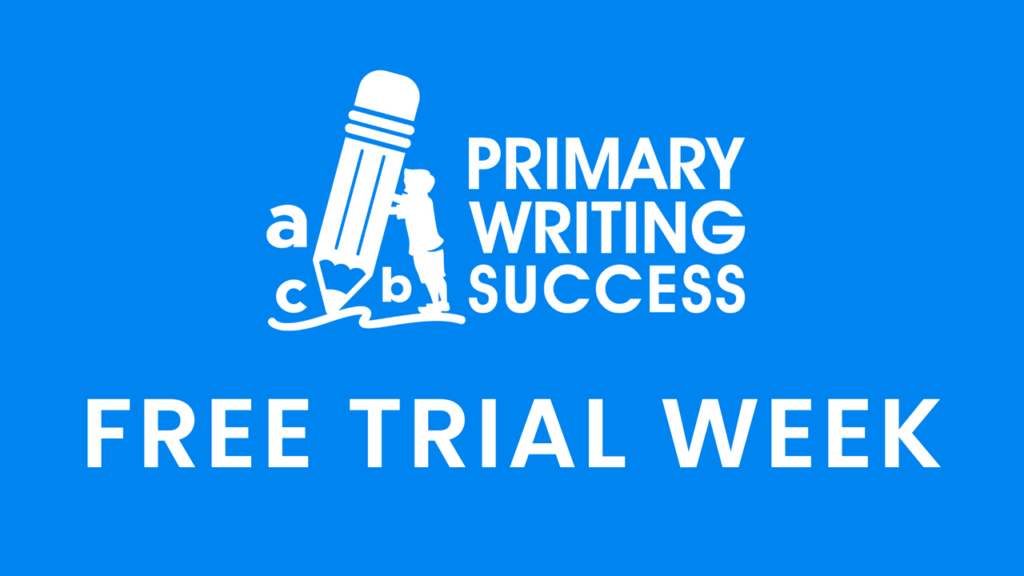
Happy teaching!
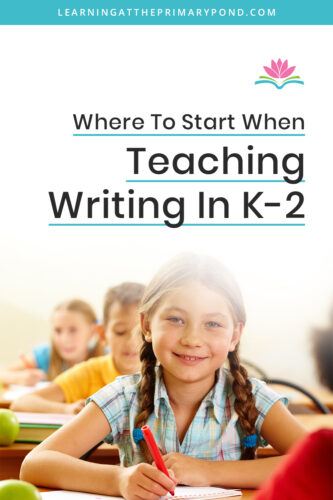

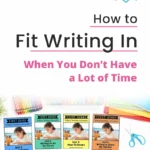
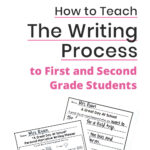
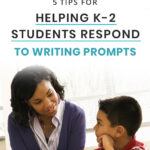
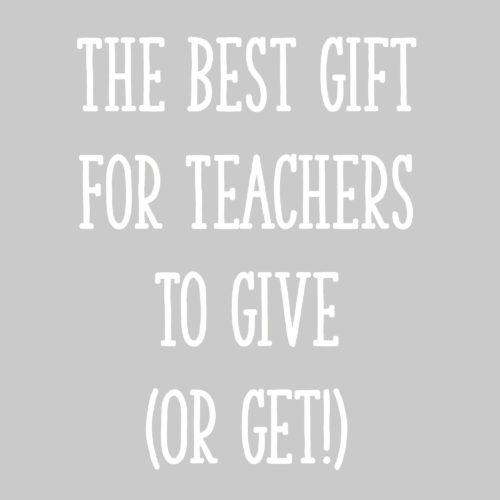
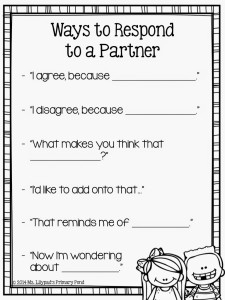







Thank you! I hate teaching writing! Please help!
Resource teacher who DOES NOT have a curriculum!
Hey Linda! Try out a free trial of my Primary Writing Success program and let me know what you think! https://www.primarywritingsuccess.com/offers/729BXnmD/checkout